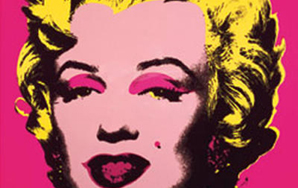What is Nobrow? Is it Different From Postbrow?
Nobrow is a more inclusive taste in culture. But while it validates art that might previously have been ignored by critics, nobrow still operates within the system of terms (“high,” “low”) that created such disparity. Even if you’re rebelling against your parents’ ideas, it’s hard to leave them completely behind.
By Anonymous

Thought Catalog is, per its self-description, “nobrow.” But what is nobrow? According to The Art and Popular Culture Encyclopedia (whose Wikipedia-style entry on nobrow I found via Google, and which, I presume, is a very legitimate source), nobrow is “a postmodern neologism derived from highbrow and lowbrow” and was coined by John Seabrook in his book Nobrow: The Culture of Marketing, the Marketing of Culture (2000).
In the context of intellectual discourse, nobrow indicates influence from both high and low culture. A nobrow person thinks that “good,” “valuable” art or thought can derive from high- or middle- or lowbrow culture (or a mixture of these). Nobrow is a more inclusive taste in culture. But while it validates art that might previously have been ignored by critics, nobrow still operates within the system of terms (“high,” “low”) that created such disparity. Even if you’re rebelling against your parents’ ideas, it’s hard to leave them completely behind.
Leslie Fiedler, the postmodernist literary critic, wrote in 1971 that pop art is subversive because it refuses the categorization that typically occurs in the art world. She also wrote that pop art is subversive because its inclusion in “high art” allows critics to judge the goodness and badness of art without regard for its “highness” or “lowness.” This also challenges the class-based prejudice associated with dismissing lowbrow art from the canon.
It makes sense to me that the subversion of hierarchical categorization in art would lead to a concept such as nobrow. But in my opinion, the concept of nobrow suggests the idea that there is no need (as how could it be “needed”?) for hierarchy in art. Once I’ve stopped excluding so many items from the Box of Serious Art, why not throw away the box?
Hierarchies seem arbitrary to me. Classifications and judgments are impossible to fully avoid as a conscious human–we’re forced to choose things and people–but it’s nice to think that all experience–all sensation–is without any inherent value. A thing is, and then someone reacts to it. Even if the reaction is simply the recognition that something appears to exist. And everyone has a choice in how they think about something. It’s freeing to realize I can control how I think about something.
Thought Catalog’s diverse group of writers have thought about very lowbrow and very highbrow things, and it seems to have led naturally to a diversity of inward and outward focus. To a range of tones – from matter-of-fact to deadpan to absurd to sassy. Daniel Coffeen has written a four-part series of personal essays critiquing capitalism as well a two-paragraph explanation of how he’s jealous of fetishists because they know what they want. Liz Colville has covered e-books and buzz bands. Madison Moore has written about ten of his favorite modern art pieces as well as four reasons to sleep with James Franco. Brandon Scott Gorrell has cataloged various bleak world events and celebrated the pleasures of Antiques Roadshow.
All these posts fit under general categories like “Essays & Stuff” to make it easier to find things, but otherwise, there are simply many posts on Thought Catalog by a lot of different people concerning a lot of different things. Make of it as you wish.
Here is a non-comprehensive list of people, things, events, and other things that are nobrow:
- Television shows like The Simpsons, Family Guy, South Park, et al. They reference both highbrow and lowbrow things (seems like a lot of television is nobrow).
- Quentin Tarantino’s films. They reference (and arguably are) B-movies as much as critically acclaimed, “serious” art films.
- If you’re big into Continental Philosophy but can chat at parties without first defining terms, you might be nobrow.
- If you’re a “serious artist” who has many “serious thoughts” about art, society, and philosophy, but you have also earnestly enjoyed listening to Waka Flocka Flame’s “No Hands” on repeat, you might be nobrow.
- MTV seems nobrow, in that they’ve produced serious documentaries on war and social phenomena, but have also given the world Beavis and Butt-head and Jersey Shore.
- Bret Easton Ellis is nobrow (he has quoted Dostoevsky and modeled his prose on Didion’s but has also sung the praises of The Hills and pop singer Delta Goodrem).
- Kanye West, in general, is nobrow (see: his music videos, his fashion sense, his public statements, his Tweets, etc.).
- This analysis of nobrow might be nobrow (unsure).
I’ve tried to demonstrate how the nobrow approach to art encourages people to discuss and appreciate a larger spectrum of culture. Thought Catalog, as a nobrow organ, has allowed its writers the freedom to think with open minds.
With an open mind I can focus not on controlling or naming but on seeing. ![]()

